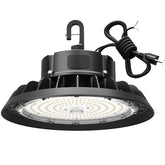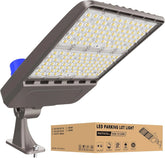What are the Ways to Save on Energy Costs in Winter?
What are some ways to save on your energy bills in winter?
As temperatures drop and winter approaches, many people may be facing the prospect of rising energy costs due to heating needs. From keeping your home warm to making sure lights and appliances are running efficiently, winter can put a huge strain on your electricity bill. However, there are many simple and effective ways to reduce your energy consumption without sacrificing comfort or convenience.
In this article, we'll explore some practical tips to help you save on energy costs during the colder months, including how upgrading to energy efficient lighting can significantly reduce winter energy consumption. Upgrade all lamps to led energy-saving lamps
1.LED lights:
LED bulbs are more energy efficient and use less electricity than traditional incandescent and fluorescent lamps. LED bulbs can typically reduce electricity consumption by up to 75%, making them particularly suitable for use in winter.
Choose LED lights with high brightness and low power: Choose LED lights with sufficient brightness but small power, which can effectively reduce energy consumption while maintaining good lighting effect.
2. Use a dimmer
Install a dimmer switch: Use a dimmer switch to adjust the light intensity without requiring a strong light, which can reduce energy consumption. Dimming the lights properly can be an effective way to save power, especially when the room is more light.
3. Use timers and sensors
Timing switch: Install a timer to ensure that the light is automatically turned off when it is not needed to avoid unnecessary energy waste caused by forgetting to turn off the light.
Motion sensor: Install motion sensor lights in corridors, bathrooms, garages and other areas, which automatically turn on when someone passes by and automatically turn off when no longer in use.
4. Clean lamps regularly
Keep light fixtures clean: Dust and dirt on the surface of light fixtures can reduce light output, causing you to need more energy to get enough lighting. Regular cleaning of lamps can improve lighting efficiency and avoid unnecessary energy waste.
5. Use natural light
Take advantage of sunlight: There is less sunlight in winter, but you can still use the natural light from your Windows to brighten the room during the day. On sunny days, minimize the use of lights and make full use of natural light to save energy and increase indoor comfort.
6. Check the insulation
Building insulation is the key to reduce energy consumption in commercial buildings. Insulation helps retain as much heat as possible during the winter months, thus reducing heating costs. The time to check your building's insulation is before winter so you can make any necessary repairs before the cold weather sets in.
7. Reduce heat loss of doors and Windows
Windows are the main culprit for energy loss in winter, emitting more heat than any other surface on a building. Installing energy-efficient double glazing (or encrypting seals on Windows to make them airtight) can save you a lot on your energy bill. The flow of people inside a building can also directly lead to a decrease in commercial energy efficiency. When the door is open, the heat dissipates faster, increasing the load on the HVAC system. The solution to this problem is to install weights or automatic closing devices on the door.
Consider renewable energy
Install solar panels: If you live in a sunny area, installing solar panels can provide some energy support during the winter months.
Solar water heaters: These can supplement your heating system, especially when you need hot water.








